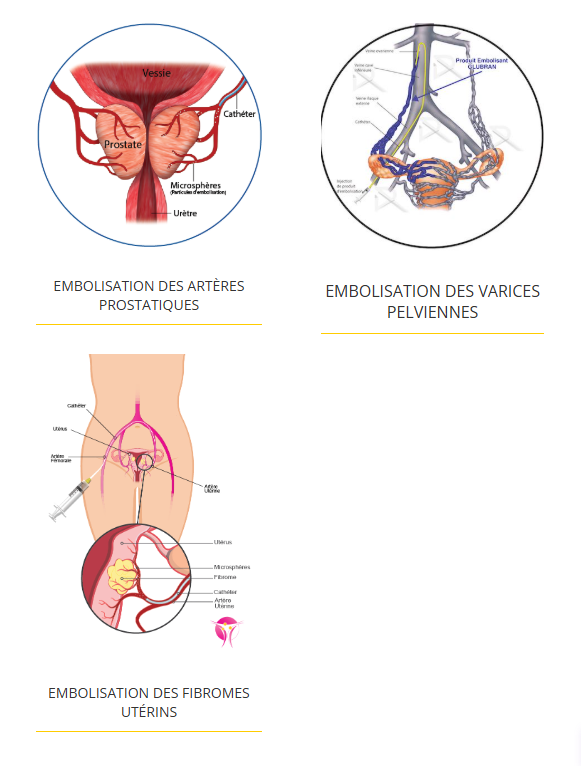Interventional radiology
IMPC cluster of excellence
RDV en ligne sur Doctolib
Rendez-vous Doctolib IMPC Bachaumont – IRM Paris 75002
Rendez-vous Doctolib Pôle Santé Bergère – IRM Paris 75009
Rendez-vous Doctolib Clinique Blomet- IRM Paris 75015

What is interventional radiology?
Interventional Radiology (IR) refers to a range of techniques that rely on the use of radiological image guidance (X-ray fluoroscopy, ultrasound, computed tomography [CT] or magnetic resonance imaging [MRI]) to precisely target therapy. Most IR treatments are minimally invasive alternatives to open and laparoscopic (keyhole) surgery. As many interventional radiology procedures begin by passing a needle through the skin to the target, they are sometimes referred to as pinhole surgery!
What is an interventional radiologist?
The core skills of an interventional radiologist are interpreting diagnostic images and manipulating needles and using fine catheter tubes and wires to navigate the body under imaging control. Interventional radiologists are physicians trained in interventional radiology and therapy. No other specialty has this unique combination of skills!
There is virtually no area of hospital medicine where IR has not had an impact on patient care.
The range of conditions that can be treated with IR is enormous and constantly expanding. You may have heard of some of the following:
- Prostate embolization
- Uterine fibroid embolization
- Embolization of pelvic varicose veins
- Embolization of varicocele
- Embolization of osteoarthritis of the knee
Why choose interventional radiology?
It's important to recognize that interventional treatment is generally only one of a number of treatment options available, ranging from nothing to medication to surgery. Each case must be considered on its own merits.
Recognized benefits of these minimally invasive techniques include reduced risks, shorter hospital stays, lower costs, greater comfort, faster recovery and return to work. Treatment efficacy is often better than with conventional therapies. It should be noted that humans are not the only species to benefit from IR. Veterinary surgeons are also turning to interventional techniques so that you and your pets can be offered similar treatments!
What are interventional radiology techniques?

